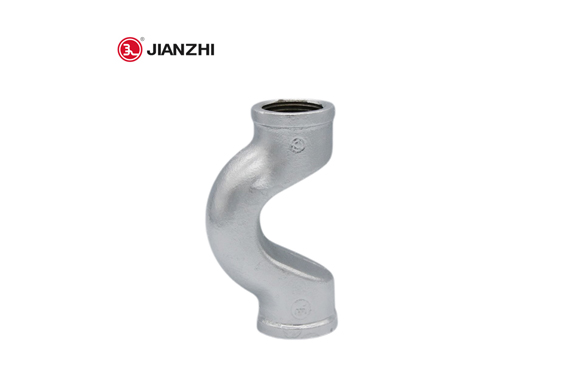Mar. 24, 2021
If you need to join galvanized pipe, we'll explain how it is done. However, if you want to switch to copper or plastic to make repairs, you can do that, but you will need to employ some specialized fittings to make the transition.
Malleable pipe fittings are those fittings having the property of malleability. This is a physical property of metals and metalloids, or any kind of matter. We call a metal malleable when it can easily be deformed, especially by hammering or rolling, without cracking the metal. Malleability is important to form pressing materials such as metals and plastics.
Malleable fittings are usually used to connect steel pipes. However, galvanized malleable fittings are used for galvanized pipe. Malleable iron pipe fittings are most common among malleable fittings and are available in many different types and sizes.

To join unthreaded galvanised tubes together, use a coupling that creates a sealed joint. It is important to know the type of coupling used for galvanised pipes, galvanized malleable fittings and the installation procedure to ensure that the pipes are leak-free. Galvanised pipes have a rough or smooth galvanised coating, depending on the type of heating process used for the zinc and steel. Most conventional galvanised pipes are rough, which can cause concern when trying to securely seal two pipes.
Measure the outside diameter of each pipe with a tape measure. If the diameters match, choose a standard coupling. If the diameters are different, choose a stepped coupling.
Look at the galvanised surface of the pipe to determine if the coating is rough or smooth. If the galvanised coating looks and feels rough, choose a coupling manufactured to accommodate the rough surface pipe. Ask for "rough surface" couplings as these have tolerances for all types of uneven pipe surfaces such as concrete and cast iron piping.
Check that the end is square by aligning the carpenter's level with the end of the unthreaded pipe. If the end of the hacksaw or chainsaw is not flush, use the hacksaw or chainsaw to cut the end square. Use a metal sander to remove the rough edges from the end of the tube.
Wipe the pipe with a cloth and water-based degreaser to remove dirt and stains from the joint. Place the ends of the pipes together. Align the coupling with the centre of the pipe joint and draw a pencil line on each pipe at each end of the coupling.
Insert one end of the unthreaded galvanised pipe into the coupling. Align the coupling end with the drawn line on the pipe. Insert the second pipe into the coupling and centre the coupling between the two drawn lines.
Tighten the fastening bolts until the coupling holds the galvanised pipe in place. Use a torque spanner set to the torque requirement of the coupling mark to tighten the bolts evenly until the spanner catches.
The information is provided by the galvanized pipe fittings supplier.
SAFER
PRODUCT INFO
ABOUT JIANZHI
TECH DATA
Contact Us
E-mail: sales1@jianzhi-fitting.com
Tel: +86 18698027872
Office In Tianjin:
Heping District, Tianjin, China.
Production Base 1:
Chifeng, Inner Mongolia, China.
Production Base 2:
Tangshan City, Hebei Province, China.
Production Base 3:
Schelei Street,Baicoi City,Prahova County,Romania
Service email: info.ro@jianzhi-fitting.com
Sales email: market.ro@jianzhi-fitting.com
Tel: +40(755)011 849
